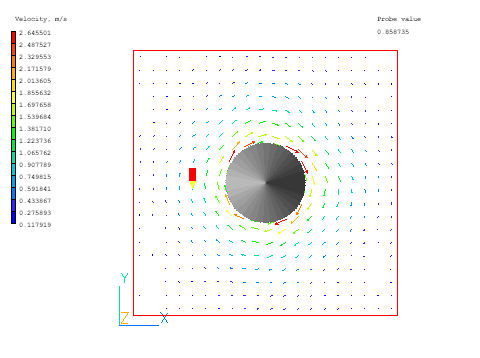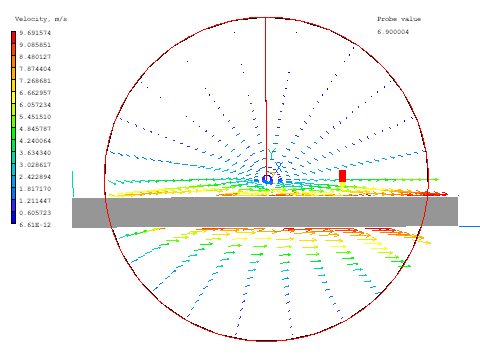

The sliding velocity can be set for blockages as well as for plates. By setting the surface velocity, a range of cases involving steady movement can be treated as steady-state.
In Cartesian co-ordinates, there is a 'Spin' option which sets the surface velocity as if the object were rotating about its axis.

In polar co-ordinates, the slide velocity can be in m/s or rad/s. The following image shows a bar being pulled at constant speed through a polar-co-ordinate domain:
